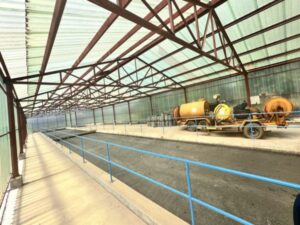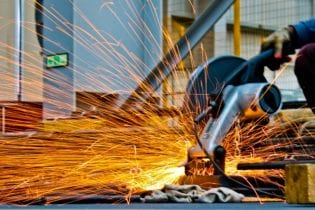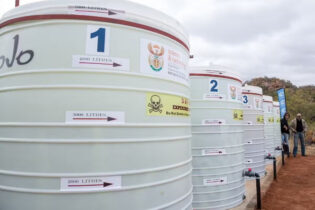I have worked for over decade in the alternative sanitation space. My career began as a candidate engineer tasked with writing training reports on alternative sanitation solutions, which was especially challenging since they were not yet fully understood or regulated. Since then, I have witnessed decent progress amid challenges.
By Lloyd Govender, senior engineer at Borda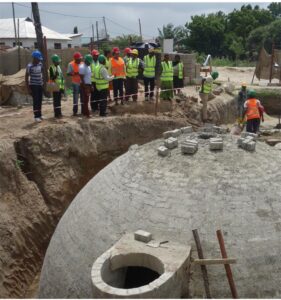 Alternative sanitation solutions look at every stage of the sanitation value chain, and how to make it more efficient. This is a tricky challenge but one well-funded by donors from developed countries. With the absence of basic sanitation in many rural and even some urban areas, the developing world is the best real-time trial.
At the moment, water scarcity and an unstable electricity grid have impacted cities and the challenges are felt by everyone, everywhere. Yes, there is solar power, boreholes, reverse osmosis and a few other technologies, but they come with their implementation challenges and require innovation to move toward sustainability.
As we approach the close of the sustainable development goals (SDG), specifically looking at SDG 6, municipalities, regulators and the rest of the sector players are starting to see the value in decentralised approaches. It’s a natural transition. At first, everything is new and has its sceptics and then eventually everyone gets on board if the idea in fact makes sense.
Norms and standards
Alternative sanitation solutions look at every stage of the sanitation value chain, and how to make it more efficient. This is a tricky challenge but one well-funded by donors from developed countries. With the absence of basic sanitation in many rural and even some urban areas, the developing world is the best real-time trial.
At the moment, water scarcity and an unstable electricity grid have impacted cities and the challenges are felt by everyone, everywhere. Yes, there is solar power, boreholes, reverse osmosis and a few other technologies, but they come with their implementation challenges and require innovation to move toward sustainability.
As we approach the close of the sustainable development goals (SDG), specifically looking at SDG 6, municipalities, regulators and the rest of the sector players are starting to see the value in decentralised approaches. It’s a natural transition. At first, everything is new and has its sceptics and then eventually everyone gets on board if the idea in fact makes sense.
Norms and standards
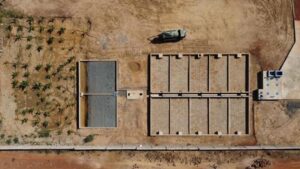 Around three years ago, there was much talk on the need for policy, and fast forward to today, the Department of Water and Sanitation is looking at reviewing the norms and standards for water supply and sanitation services. Decentralised wastewater treatment systems and onsite sanitation systems are seen to provide sustainable solutions to the areas that cannot be connected to the centralised municipal sewerage system.
The City of Cape Town receives water from Theewaterskloof that is polluted due to the increase in housing and the absence of sanitation services, so both teams partnered to figure a way forward.
These norms and standards will serve as guidelines to ensure that when using alternative sanitation technologies, the correct method of evaluating their suitability is followed. There are a clear definition of the compliance needs which are then managed by the local municipalities. There must be a move to sustainability as well as responsibility for that sustainability.
What alternatives?
Around three years ago, there was much talk on the need for policy, and fast forward to today, the Department of Water and Sanitation is looking at reviewing the norms and standards for water supply and sanitation services. Decentralised wastewater treatment systems and onsite sanitation systems are seen to provide sustainable solutions to the areas that cannot be connected to the centralised municipal sewerage system.
The City of Cape Town receives water from Theewaterskloof that is polluted due to the increase in housing and the absence of sanitation services, so both teams partnered to figure a way forward.
These norms and standards will serve as guidelines to ensure that when using alternative sanitation technologies, the correct method of evaluating their suitability is followed. There are a clear definition of the compliance needs which are then managed by the local municipalities. There must be a move to sustainability as well as responsibility for that sustainability.
What alternatives?
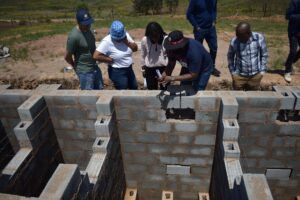 Now, we have to dive into what alternative sanitation solutions are. Think about conventional treatment: massive treatments at low-lying areas, pump stations, and deep sewers (seriously large diameters). Now picture your neighbour, and at the lowest lying area, there is exactly this but smaller in size, and dedicated to treating the wastewater generated by perhaps the 250 households around you.
At the moment, conventionally treated wastewater is returned to natural water. Compliance is a major issue due to innumerable reasons but with alternative sanitation solutions, the wastewater can be treated for re-use or agriculture if the opportunity presents itself. Return to natural water resources is also possible. In the bubble of alternative sanitation solutions, some systems work on electricity and others work purely on gravity and without chemicals.
Pit toilets
Now, we have to dive into what alternative sanitation solutions are. Think about conventional treatment: massive treatments at low-lying areas, pump stations, and deep sewers (seriously large diameters). Now picture your neighbour, and at the lowest lying area, there is exactly this but smaller in size, and dedicated to treating the wastewater generated by perhaps the 250 households around you.
At the moment, conventionally treated wastewater is returned to natural water. Compliance is a major issue due to innumerable reasons but with alternative sanitation solutions, the wastewater can be treated for re-use or agriculture if the opportunity presents itself. Return to natural water resources is also possible. In the bubble of alternative sanitation solutions, some systems work on electricity and others work purely on gravity and without chemicals.
Pit toiletsWe still then have to think about sludge, as many rural areas have pit toilets, and these have really let people down in most cases due to construction quality, and/or overload of the pit without operation and maintenance.
I have seen thousands of pit toilets in South Africa, and I can remember only around 10 or 11 still working well without damage.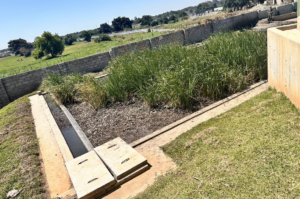 A solution for sludge is still needed. Before that though, toilets and structures that can replace pits while working on low flush or no water are currently being rolled out. Even though they still are in essence a pit toilet, the quality brought forward by most alternative sanitation solution pioneers are well suited to provide dignity and safety, even in the absence of or presence of little water. The trouble here is that the sludge piles up and needs to be taken to either a hazardous waste site or a processing facility. The first option is possible, but the second still needs to be sustainably developed.
This is where faecal sludge treatment plants become viable. The faecal sludge treatment plants have many iterations for design, depending on what you plan to do with the end product. Options such as composting exist and our neighbours Tanzania and Zambia have successfully implemented these plants where they are close to the source of the waste, lowering logistics costs and decentralising sanitation, kerbing the problem slowly. Slowly is better than no movement and movement comes with loads of experience and through cross-country engagement we can share and develop. The Department of Water and Sanitation is currently planning this initiative.
Considerations
If you are a regulator, there are three important considerations:
A solution for sludge is still needed. Before that though, toilets and structures that can replace pits while working on low flush or no water are currently being rolled out. Even though they still are in essence a pit toilet, the quality brought forward by most alternative sanitation solution pioneers are well suited to provide dignity and safety, even in the absence of or presence of little water. The trouble here is that the sludge piles up and needs to be taken to either a hazardous waste site or a processing facility. The first option is possible, but the second still needs to be sustainably developed.
This is where faecal sludge treatment plants become viable. The faecal sludge treatment plants have many iterations for design, depending on what you plan to do with the end product. Options such as composting exist and our neighbours Tanzania and Zambia have successfully implemented these plants where they are close to the source of the waste, lowering logistics costs and decentralising sanitation, kerbing the problem slowly. Slowly is better than no movement and movement comes with loads of experience and through cross-country engagement we can share and develop. The Department of Water and Sanitation is currently planning this initiative.
Considerations
If you are a regulator, there are three important considerations:
- Sustainability – Who takes ownership, how do they do that and how do they operate and maintain these systems? The municipality – yes, but are they capacitated to? Is the will there? How do we encourage the will and form collaborative structures?
- Suitability – How do we ensure the correct systems are employed, employed ethically, and run correctly?
- Compliance monitoring – What are the parameters? The basics apply but depending on the technology and surrounding aspects (boreholes, other treatment systems), what structure do we follow?


